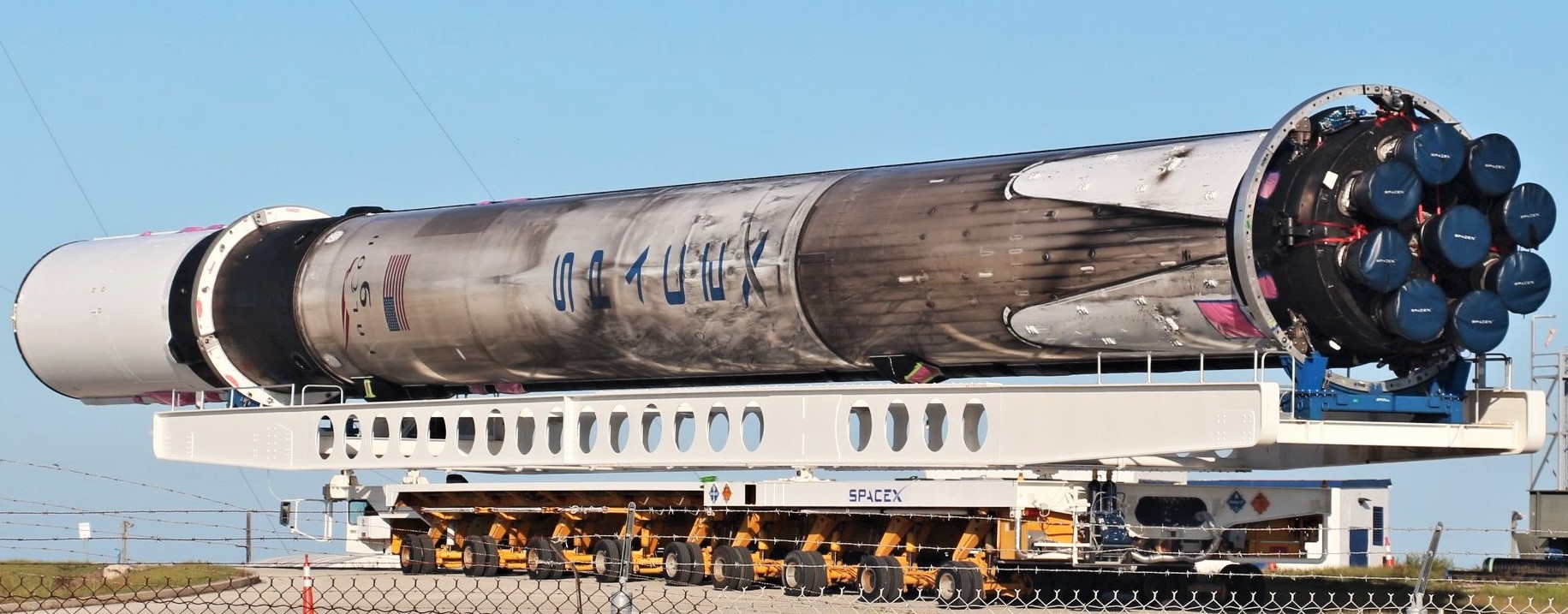
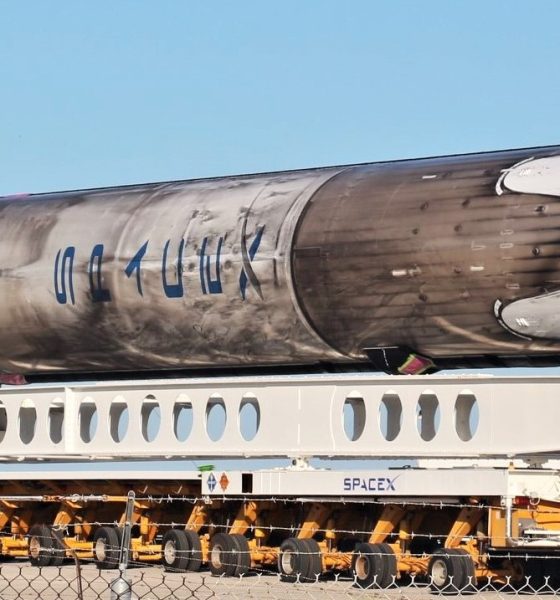
News
SpaceX transports Falcon 9 to launch site ahead of Block 5’s second expendable launch ever
Photos published on July 28th by customer Spacecom show a sooty SpaceX Falcon 9 booster and fresh upper stage on their way to LC-40 for the launch of the AMOS-17 communications satellite, scheduled to lift off no earlier than 6:51 pm EDT (22:51 UTC), August 3rd.
Sadly, the booster will reportedly be expended during the launch. According to Spacecom, AMOS-17 – built by Boeing – is an undeniably large satellite, weighing more than 6500 kg (14,300 lb) and featuring a solar array wingspan of ~35m (115 ft). SpaceX has certainly launched larger satellites than AMOS-17 and still recovered their Falcon 9 boosters, but this mission is somewhat unique and SpaceX is obviously willing to go the extra mile in this case.
In a surprise development, Spacecom officially confirmed that AMOS-17 will be SpaceX’s second expendable Falcon 9 Block 5 launch in the rocket’s ~15 months of operations, following in the footsteps of its expendable December 2018 launch debut. This is more than a little disappointing, thanks in large part to the fact that SpaceX has developed Falcon 9 (and Heavy) reusability to such a level of maturity that fully expendable Falcon launches just feel wrong.
In fact, just a month ago, SpaceX reached a major milestone of reusability when it recovered two flight-proven Falcon Heavy boosters and became the first company in history to launch and land more orbital-class rocket boosters than it has expended (as of June 2019: 81 launched, 43 landed). SpaceX followed this up with landing #44 after Falcon 9 B1056.2 successfully completed its second launch on July 25th.
While expending a Block 5 booster that SpaceX CEO Elon Musk has stated could launch upwards of 20-30 times is certainly disappointing, the sting of Block 5’s second expendable mission is at least soothed by the knowledge that it will be this booster’s third and final launch. The first expendable Block 5 launch – the US Air Force’s GPS III SV01 mission – made use of a brand new booster (B1054).
A (hopefully) worthy sacrifice
In a small way, Falcon 9 B1047’s premature demise could easily be viewed as a sort of symbolic eye-for-an-eye sacrifice. Although not a literal 1:1 replacement, AMOS-17 is still essentially a follow-on to Amos-6, destroyed on September 1st, 2016 when Falcon 9 suffered an exotic COPV failure that led to a massive explosion (Musk called it a ‘fast fire’).
Installed on top of the rocket during what was meant to be a pre-launch static fire test, the ~$200M+ Amos-6 satellite was not spared from the destruction and owner Spacecom ultimately received an insurance settlement it then used (in part) to purchase AMOS-17. Additionally, instead of accepting a cash payout from SpaceX, Spacecom chose the contractual alternative: a free Falcon 9 launch of their choice.
Is it a coincidence that a Block 5 booster is going to be expended as part of that replacement launch? Almost certainly, yes. At a minimum, SpaceX – essentially launching for free per a contractual agreement with Spacecom – has clearly decided along with Spacecom that putting all of Falcon 9’s energy into AMOS-17 is preferable to withholding margin for a landing.
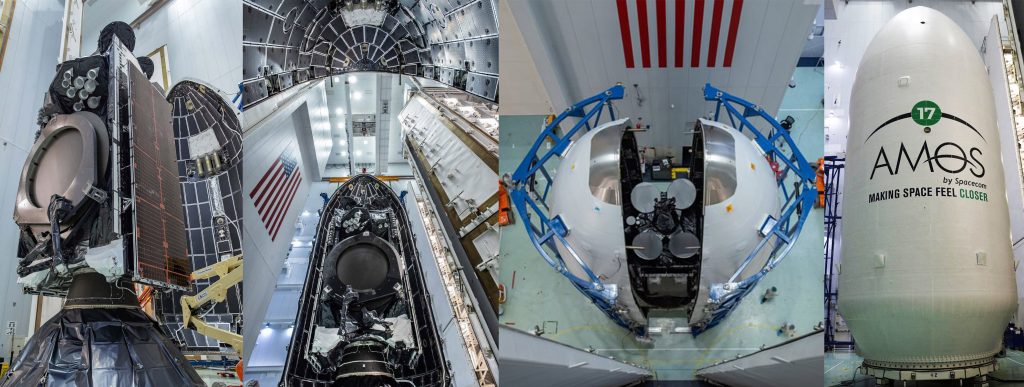
With Falcon 9 B1047.2 in an expendable configuration, SpaceX can take a no-holds-barred approach towards delivering Spacecom’s AMOS-17 to the highest orbit possible. The higher the geostationary transfer orbit (GTO) Falcon 9 can launch AMOS-17 to, the faster the satellite can begin serving customers and thus generating revenue for Spacecom. Combined with the fact that more than half of AMOS-17’s massive 6.5-ton mass is chemical propellant, the spacecraft – pending a healthy launch and on-orbit commissioning – could be ready to start serving customers just a month or two after lift-off.
Falcon 9 B1047 will be missed, but the booster’s demise is an understandable cost of SpaceX prioritizing customer Spacecom’s launch experience above the company’s own best interests.
Check out Teslarati’s Marketplace! We offer Tesla accessories, including for the Tesla Cybertruck and Tesla Model 3.

News
Tesla on track to break Volkswagen’s historic record in Norway: report
As per Elbil Statistik, Tesla reached 26,127 Norwegian sales so far this year, without counting 13 imported Cybertrucks.
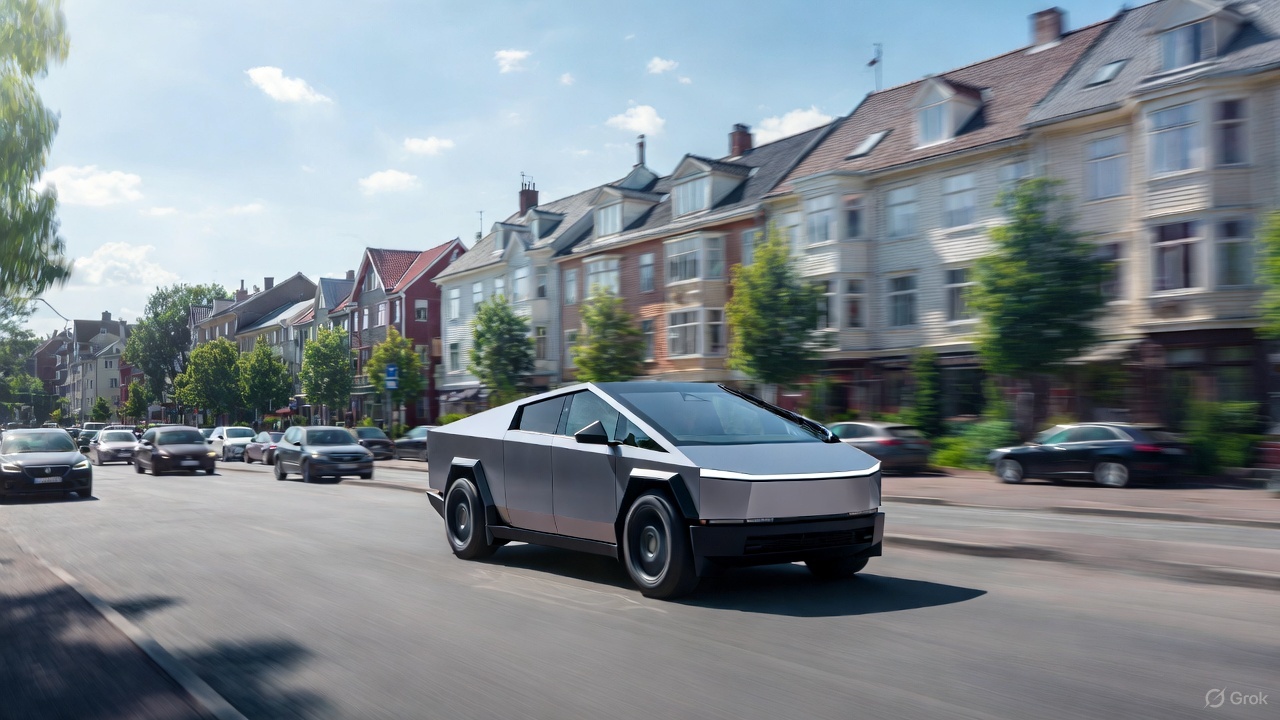
Tesla is surging towards a historic milestone in Norway this month, putting the company on track to break Volkswagen’s long-standing annual sales record in the country.
With 3,732 units sold in November alone and more than 26,000 delivered year-to-date, Tesla is poised to become one of the most successful car brands in Norway’s modern automotive history.
Tesla closes in on Norway’s all-time sales record
Norway’s demand for Tesla vehicles has intensified as drivers attempt to beat the incoming VAT changes on electric cars. Once the VAT changes take effect, the best-selling Model Y could become 50,000 kroner more expensive, as noted in a CarUp report. This has likely caused a rise in sales for Tesla in the country as of late.
As per Elbil Statistik, Tesla reached 26,127 Norwegian sales so far this year, without counting 13 imported Cybertrucks. This places the brand just hundreds of units away from surpassing Volkswagen’s 2016 record of 26,572 annual registrations. With one month left in 2025, it seems all but certain that Tesla will overtake Volkswagen’s all-time record in Norway.
Tesla sees challenges in Sweden
While Norway is delivering historic results, Tesla’s Swedish performance has moved in the opposite direction. Registrations have dropped 68% this year, totaling just 6,147 vehicles so far. November has seen only 291 deliveries, highlighting challenges in the domestic market’s momentum.
Tesla Sweden is also still dealing with an increasing number of union-backed protests and blockades. Despite the pressure, however, Tesla Sweden has maintained its stance, IF Metall union chair Marie Nilsson to urge Elon Musk to reconsider his perception of organized labor. She also stated that Swedish unions are not like their American counterparts, as they are not as combative.
News
Tesla Full Self-Driving lands in a new country, its 7th
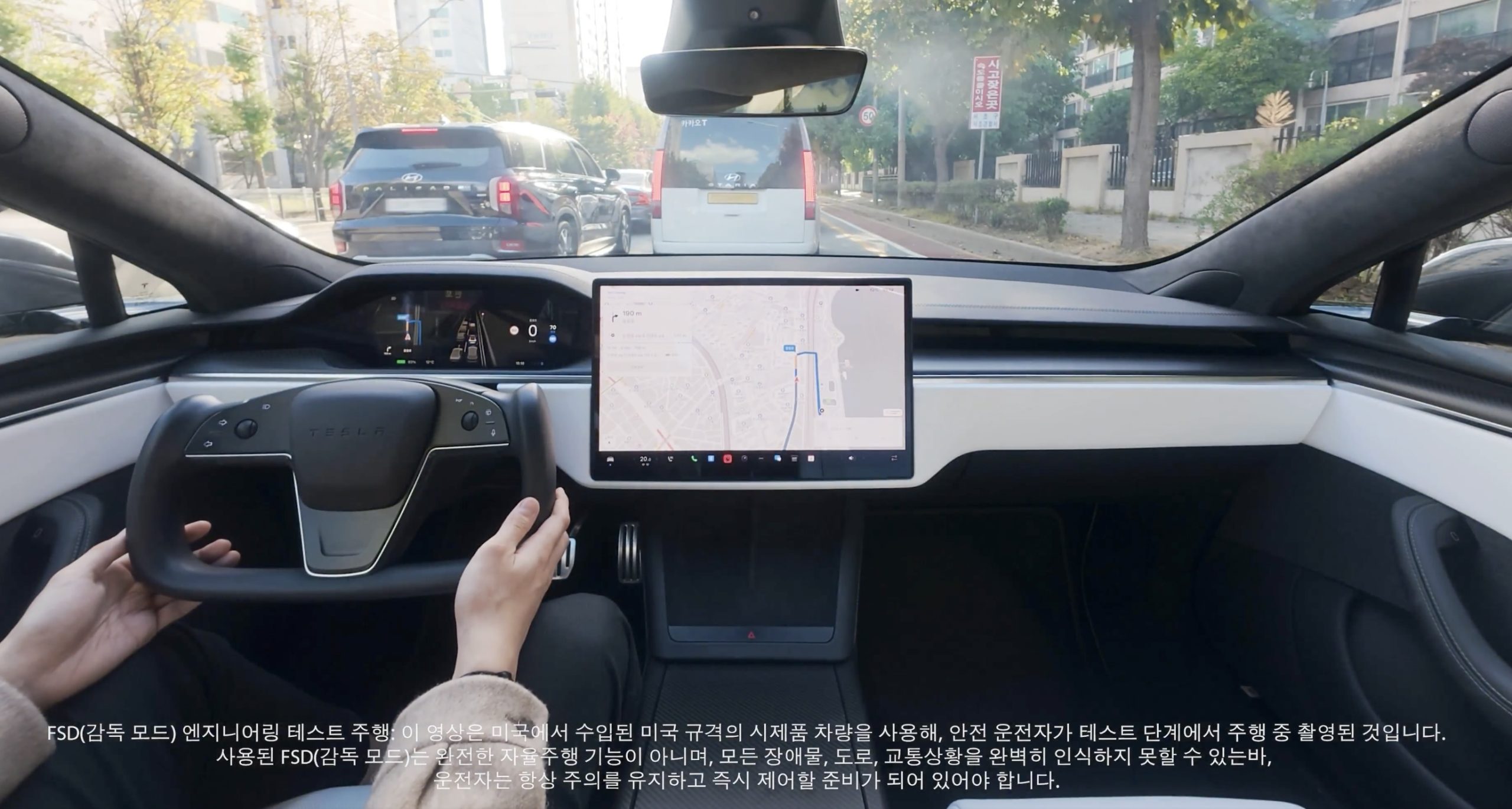
Tesla Full Self-Driving has officially landed in a new country today, its seventh overall after it launched in both Australia and New Zealand earlier this year.
On Sunday, Tesla owners in South Korea reported that the company’s Full Self-Driving (Supervised) had started arriving in their vehicles. Owners reported that it was v14.1.4, which is not the latest version available in other countries, but is one of the most recent releases Tesla has deployed to drivers:
From 6 to 7
Tesla Full Self-Driving has launched in South Korea; the 7th country to have FSD https://t.co/X6gm1SyoxV
— TESLARATI (@Teslarati) November 23, 2025
This marks the seventh country in which Tesla has enabled its Full Self-Driving suite, following the United States and Puerto Rico, Canada, China, Mexico, Australia, and New Zealand.
Tesla launched Full Self-Driving most recently in Australia and New Zealand about three months ago. The expansion is a major breakthrough for the company as it aims to launch Full Self-Driving on a global scale.
However, the company’s biggest challenge thus far has been getting European regulatory agencies to handle the red tape that has inhibited Tesla from launching its semi-autonomous driving suite on the continent. Recently, it admitted that it sees a pathway through Dutch regulatory bodies, which seem to be the most willing to work with Tesla to get FSD in Europe.
Tesla Full Self-Driving appears to be heading to Europe soon
The company said that it has driven over 1 million kilometers safely on European roads across 17 different countries in internal testing. But its path to success will be by “partnering with the Dutch approval authority RDW to gain exemption for the feature. This involves proving compliance with existing regulations (UN-R-171 DCAS) + filing an exemption (EU Article 39) for yet-to-be-regulated behaviors like Level 2 systems off-highway, system-initiated lane changes with hands-off the wheel, etc.”
Perhaps the expansion into Europe will be the biggest challenge for Tesla, but it could also yield major results and advantages for the company moving forward. Tesla said it hopes to have FSD available in Europe sometime early next year.
For now, the expansion in South Korea is the latest win for Tesla and its self-driving efforts. In the U.S., it now turns its focus toward fully autonomous operation, as it works with state agencies to launch Robotaxi outside of Texas, California, and most recently, Arizona.
Elon Musk
Tesla CEO Elon Musk teases insane capabilities of next major FSD update

Tesla CEO Elon Musk teased the insane capabilities of the next major Full Self-Driving update just hours after the company rolled out version 14.2 to owners.
Tesla Full Self-Driving v14.2 had some major improvements from the previous iteration of v14.1.x. We were on v14.1.7, the most advanced configuration of the v14.1 family, before Tesla transitioned us and others to v14.2.
However, Musk has said that the improvements coming in the next major update, which will be v14.3, will be where “the last big piece of the puzzle finally lands.”
14.3 is where the last big piece of the puzzle finally lands
— Elon Musk (@elonmusk) November 21, 2025
There were some major improvements with v14.2, most notably, Tesla seemed to narrow in on the triggers that caused issues with hesitation and brake stabbing in v14.1.x.
One of the most discussed issues with the past rollout was that of brake stabbing, where the vehicle would contemplate proceeding with a route as traffic was coming from other directions.
We experienced it most frequently at intersections, especially four-way stop signs.
Elon Musk hints at when Tesla can fix this FSD complaint with v14
In our review of it yesterday, it was evident that this issue had been resolved, at least to the extent that we had no issues with it in a 62-minute drive, which you can watch here.
Some owners also reported a more relaxed driver monitoring system, which is something Tesla said it was working on as it hopes to allow drivers to text during operation in the coming months. We did not test this, as laws in Pennsylvania prohibit the use of phones at any time due to the new Paul Miller’s Law, which took effect earlier this year.
However, the improvements indicate that Tesla is certainly headed toward a much more sentient FSD experience, so much so that Musk’s language seems to be more indicative of a more relaxed experience in terms of overall supervision from the driver, especially with v14.3.
Musk did not release or discuss a definitive timeline for the release of v14.3, especially as v14.2 just rolled out to Early Access Program (EAP) members yesterday. However, v14.1 rolled out to Tesla owners just a few weeks ago in late 2025. There is the potential that v14.3 could be part of the coming Holiday Update, or potentially in a release of its own before the New Year.








